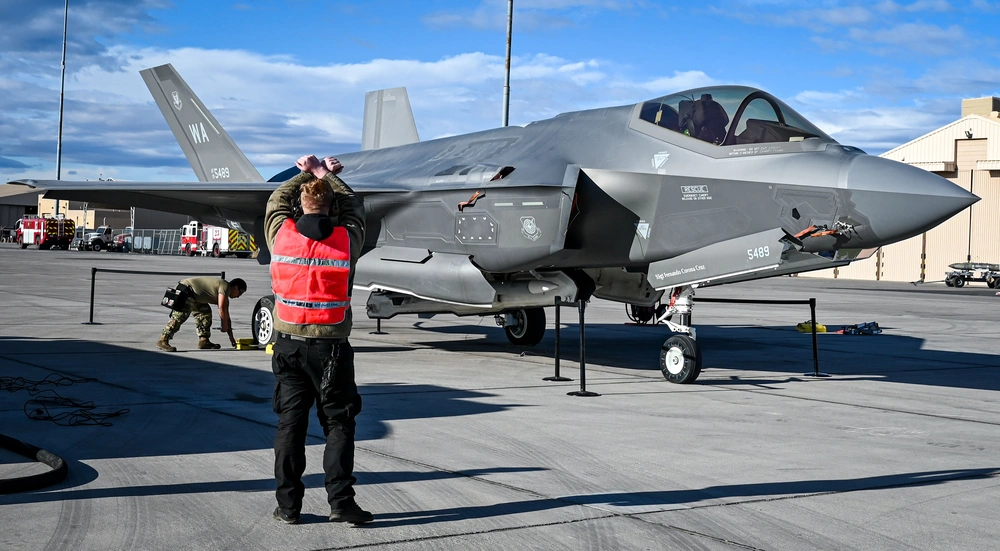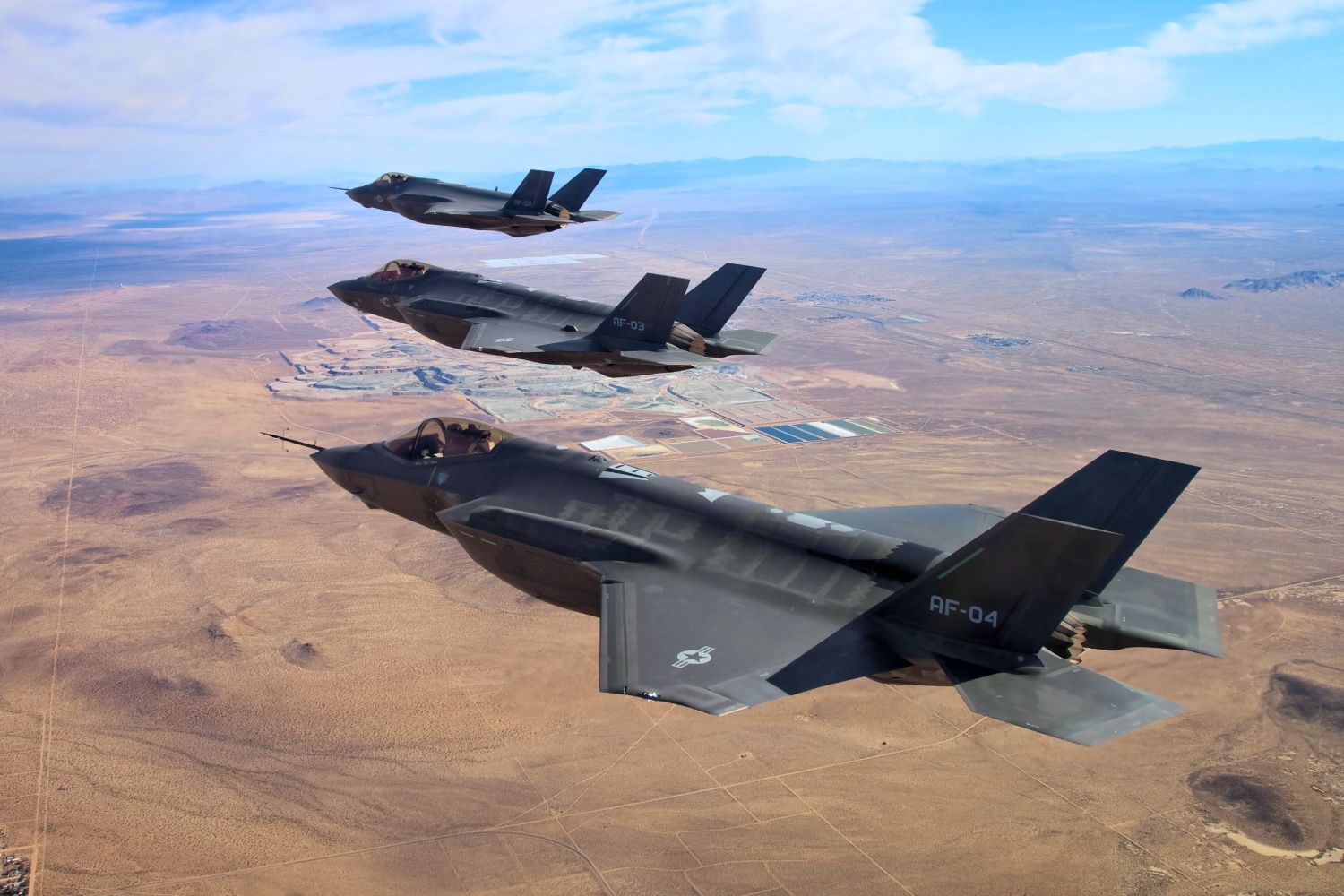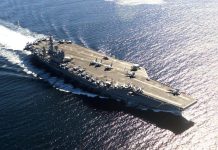In response to escalating concerns over Chinese missile threats to its air bases in the Western Pacific, the US Air Force recently carried out a test aimed at boosting the survivability and lethality of its F-35 fighter jets while stationed on the ground.
The USAF’s 59th Test and Evaluation Squadron has tested rapid aircraft regeneration and employment procedures on the F-35 Lightning II at Nellis Air Force Base, Nevada.
During the test, maintenance crews refueled the F-35 and loaded munitions without shutting down its engine, a process known as a hot integrated combat turn (ICT). The service pointed out that this rapid turnaround is crucial for battlefield survivability.
The test involved refueling the F-35A and arming it with four AIM-120 advanced medium-range air-to-air missiles while its engine remained operational.
Similar procedures have been employed on legacy military aircraft, but implementing them on the F-35 required extensive planning, risk assessment, and a strong focus on safety.

Traditionally, pilots shut down an aircraft’s engines during maintenance, a process that takes approximately three hours, leaving it vulnerable on the ground. By adopting ICT, the Air Force can cut turnaround time by more than half and improve operational efficiency.
The event brought together multiple units, with the ICT test leveraging expertise from active duty, Guard, and Reserve components.
The 59th Test and Evaluation Squadron (TES) worked alongside the Air National Guard, AATC, the 422nd Test and Evaluation Squadron, and the 57th Wing to develop and implement the procedures.
Additionally, the team incorporated insights from Marine Corps units and the Vermont Air National Guard’s experience with similar operations to increase both effectiveness and safety.
The Air Force views this event as crucial for preparing crews to handle real-world combat situations effectively.
Master Sgt. Oliver Gutierrez, the F-15 and F-16 Fighting Falcon operational test and evaluation superintendent for the 59th TES said that the aim is to establish uniform procedures so that maintainers are well-trained and confident when carrying them out in combat.
“This will save lives and significantly enhance the lethality of our aircraft,” Gutierrez added.
Chinese Missile Threats Put USAF Bases at Risk
For decades, the US Air Force has played a critical role in deterring adversaries by ensuring it can respond swiftly and effectively to acts of aggression. However, that capability is increasingly under threat.
Over the past 30 years, China has developed an extensive and sophisticated missile arsenal designed to target the runways essential for deploying American air power in the Indo-Pacific. This growing missile threat has raised serious concerns about the ability of US forces to sustain operations in a conflict scenario.
Multiple reports from leading think tanks have warned that the People’s Liberation Army (PLA) now possesses the missile capacity to neutralize a significant number of US military aircraft while they remain stationed at air bases.
Alarmingly, US lawmakers warned last year that, in a potential conflict with China, as much as 90% of American aircraft losses could occur on the ground rather than in aerial engagements.
A recent Hudson Institute report further underscored this vulnerability, stating that China could cripple US airpower in the Indo-Pacific with far fewer missile strikes than the US and its allies would need to achieve the same effect against China’s air forces.

Compounding the challenge, Beijing has been rapidly fortifying its airbases and diversifying its combat aircraft fleet in the region, tipping the balance in its favor. In contrast, US airfields remain highly vulnerable to missile strikes, particularly in a potential Taiwan conflict.
Meanwhile, the US Air Force has been actively exploring ways to enhance survivability, including dispersing aircraft across multiple locations and utilizing unconventional runways as part of its Agile Combat Employment (ACE) strategy.
A key component of this effort is the implementation of Integrated Combat Turns (ICTs)—a technique designed to rapidly rearm and refuel aircraft to allow them to return to combat-ready status within minutes rather than hours.
The US Air Force has been conducting multiple ICT tests and training exercises across the Indo-Pacific, integrating lessons learned from various units, including active duty, Guard, and Reserve components.
While challenges remain, such as ensuring sufficient logistical support and training personnel for high-intensity ICT operations, the US Air Force views this capability as a vital step toward maintaining air superiority in a conflict.
- Contact the author at ashishmichel(at)gmail.com
- Follow EurAsian Times on Google News




